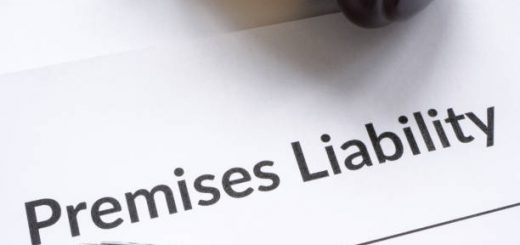How to File a Premises Liability Lawsuit: A Step-by-Step Guide

- Seek medical attention immediately – Proper medical documentation is essential for proving the severity and cause of your injury.
- Report and document the incident – Notify the property owner, collect witness information, and capture evidence like photos and videos.
- Understand legal deadlines – Each state has a statute of limitations, so filing promptly is crucial to protect your rights.
- Consult an experienced attorney – A lawyer can assess your case, gather evidence, negotiate with insurers, and represent you in court if needed.
- Follow the legal process step by step – From filing the lawsuit to discovery, settlement negotiations, and potentially trial, each stage is important for a successful outcome.
- Prepare for challenges and settlements – Proving negligence, dealing with disputed injuries, and evaluating settlement offers are key aspects to consider.
- Collect compensation properly – If successful, ensure all damages, including medical costs, lost income, and pain and suffering, are collected efficiently.
Premises liability lawsuits can feel overwhelming, especially if you’ve been injured on someone else’s property. But understanding the process can make it much easier to navigate. This guide will walk you through filing a premises liability lawsuit, step by step, and help you understand what to expect along the way.
What is a Premises Liability Lawsuit?
A premises liability lawsuit occurs when a property owner is held responsible for injuries that occur on their property due to unsafe conditions. These injuries can happen in stores, apartment complexes, private homes, or even public spaces. Common examples include:
- Slip and fall accidents caused by wet floors or uneven surfaces
- Injuries from falling objects or poorly maintained structures
- Dog bites or animal attacks on the property
- Inadequate security leading to assaults or criminal incidents
If you’ve been injured because of a property owner’s negligence, you may be eligible to file a premises liability lawsuit.
When Should You Consider Filing a Premises Liability Lawsuit?
Not every injury on someone else’s property warrants a lawsuit. Consider legal action if:
- Your injury required medical treatment or caused lasting damage
- The property owner was aware of the dangerous condition and didn’t fix it
- You lost income because of the injury
- The incident involved criminal activity or unsafe security measures
Before filing, it’s important to assess whether the property owner had a duty of care and whether their negligence directly caused your injury.
Step 1: Seek Medical Attention
Your health should always come first. Even if the injury seems minor, getting checked by a medical professional is crucial. Medical records:
- Document the severity of your injury
- Provide evidence linking the injury to the incident on the property
- Help calculate damages for compensation, including medical bills and lost wages
Always keep copies of medical reports, bills, prescriptions, and follow-up visit records. These documents are critical for building a strong case.
Step 2: Report the Incident
After seeking medical attention, report the incident to the property owner or manager. Make sure to:
- Provide a clear account of what happened
- Include the date, time, and location of the incident
- Take photos or videos of the scene and any hazards
- Collect contact information for witnesses
This step creates an official record of the incident and demonstrates that the property owner was informed of the unsafe condition.
Step 3: Document Everything
Thorough documentation can make or break your case. Keep detailed records of:
- Injuries sustained and medical treatment
- Expenses related to the injury, including travel for medical appointments
- Communication with property owners, insurance companies, or witnesses
- Photographs of the property and hazardous conditions
The more evidence you have, the stronger your premises liability lawsuit will be.
Step 4: Understand the Statute of Limitations
Every state has a legal deadline for filing a premises liability lawsuit, called the statute of limitations. Filing after this period can result in your case being dismissed. Make sure to:
- Research the statute of limitations in your state
- Note the exact date of the incident
- Consult with an attorney if you’re unsure about the deadline
Acting promptly ensures that your rights are protected.
Step 5: Consult with a Premises Liability Attorney
Hiring an experienced attorney can significantly improve your chances of a successful outcome. A qualified lawyer can:
- Assess the strength of your case
- Help gather and organize evidence
- Negotiate with insurance companies
- Represent you in court if necessary
Many premises liability lawyers offer free consultations, so you can get advice without upfront costs.
Step 6: Filing the Lawsuit
Once you’ve prepared your documentation and consulted with a lawyer, it’s time to file the lawsuit. This step often follows after you’ve made a premises liability claim with the property owner or their insurance company. Filing a lawsuit is how you formally take legal action if your claim isn’t resolved fairly.
The steps generally include:
- Drafting a complaint that outlines your injury, damages, and legal claims
- Filing the complaint with the appropriate court
- Serving the property owner with the lawsuit
Filing officially starts the legal process and allows the property owner to respond. By connecting your claim to the lawsuit, you ensure that your case is supported by proper documentation and evidence.
Step 7: Discovery and Evidence Gathering
After the lawsuit is filed, both parties engage in a process called discovery. During discovery:
- You may be asked to provide additional evidence, such as medical records or eyewitness statements
- The property owner may provide information about their insurance or maintenance records
- Depositions may be conducted, where witnesses give sworn statements
Discovery helps both sides build their cases and prepares for potential settlement or trial.
Step 8: Negotiation and Settlement
Many premises liability lawsuits are settled before reaching trial. During settlement negotiations:
- Your attorney may communicate with the property owner’s insurance company
- Compensation offers will be discussed, which may cover medical bills, lost wages, pain and suffering, and other damages
- You can accept a fair settlement or continue with the lawsuit if the offer is inadequate
Settling can save time and reduce legal expenses, but it’s important to evaluate whether the settlement fully compensates you for your losses.
Step 9: Trial (If Necessary)
If a settlement cannot be reached, your case may go to trial. During trial:
- Both sides present evidence and witness testimony
- Attorneys make arguments supporting their client’s position
- A judge or jury decides whether the property owner is liable and what compensation is owed
While trials can be lengthy and stressful, they may be necessary to achieve full justice in some cases.
Step 10: Collecting Your Compensation
If your premises liability lawsuit is successful, either through settlement or trial, you’ll receive compensation for your damages. Compensation can include:
- Medical expenses and ongoing treatment costs
- Lost income due to missed work
- Pain and suffering or emotional distress
- Property damage, if applicable
Your attorney will guide you on the process of collecting your award and ensure the funds are distributed correctly.
Tips to Strengthen Your Premises Liability Case
- Act quickly: Report the incident and seek legal advice as soon as possible
- Gather witness statements: People who saw the accident can provide powerful testimony
- Take detailed photos: Include injuries, hazardous conditions, and surrounding areas
- Keep a journal: Record how the injury affects daily life, work, and emotional well-being
- Avoid social media posts: Insurance companies may use posts against your case
Common Challenges in Premises Liability Lawsuits
- Proving negligence: You must show the property owner failed to maintain a safe environment
- Disputed injuries: Some property owners may argue your injury was unrelated
- Insurance limits: Compensation may be limited by the property owner’s policy
- Shared liability: Cases can be complicated if multiple parties share responsibility
Understanding these challenges can help you better prepare for the legal process.
FAQs About Premises Liability Lawsuits
How long does it take to resolve a premises liability lawsuit?
Resolution can vary from a few months to several years, depending on the complexity of the case and whether it goes to trial.
Do I need a lawyer to file a premises liability lawsuit?
While not required, an attorney experienced in personal injury can greatly improve your chances of success.
Can I file a lawsuit if I was partially at fault?
Many states use comparative negligence laws, which may reduce your compensation but not necessarily prevent a claim.
What if the property owner has no insurance?
You may still be able to recover damages directly from the property owner, but it may be more difficult to collect the full amount.
Final Thoughts
Filing a premises liability lawsuit may seem intimidating, but breaking it down into steps can make it manageable. By seeking medical attention, documenting everything, understanding your legal rights, and consulting a qualified attorney, you increase your chances of a successful outcome. Remember, acting promptly and carefully can make all the difference in getting the compensation you deserve.


